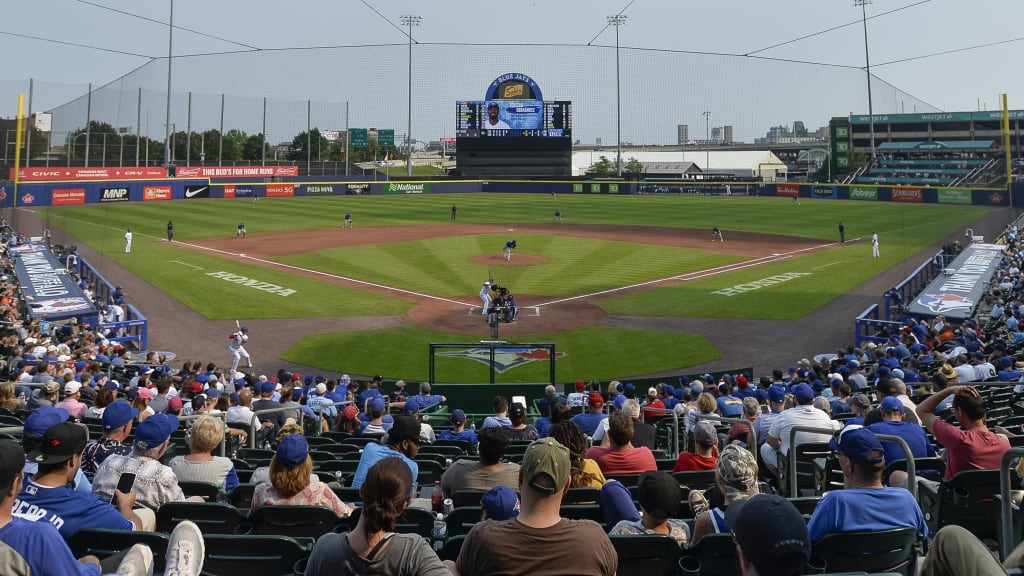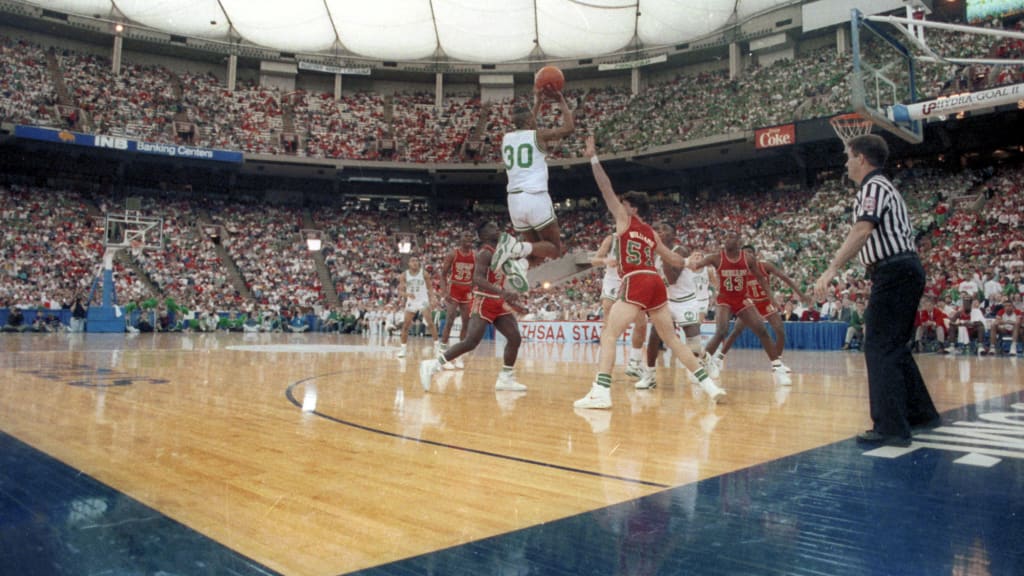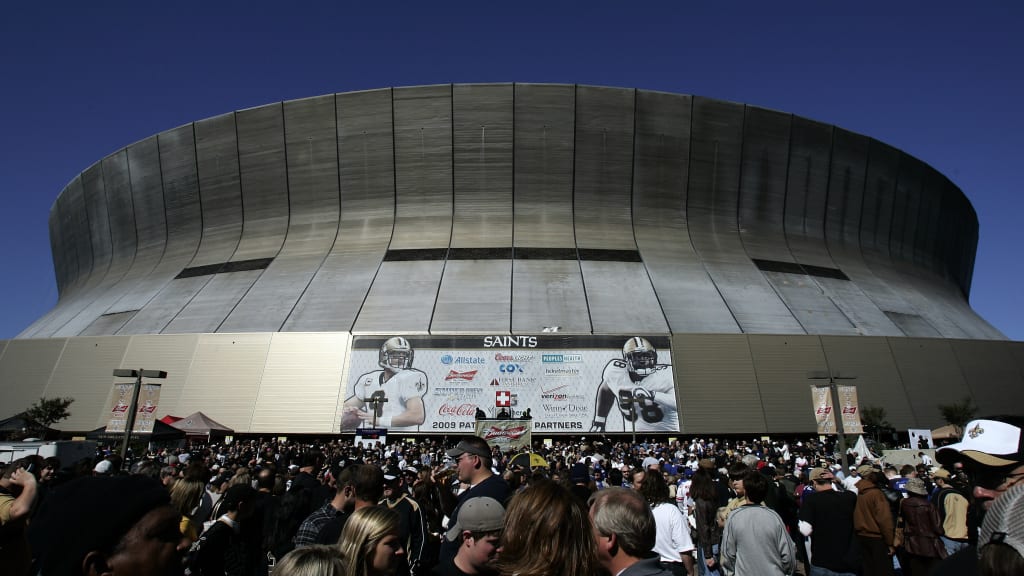
MLB expansion is always a tantalizing topic because it allows us to dream up new possibilities. New stadiums, new nicknames, new logos, new rivalries. People in baseball always banter about which cities would be the best fits for a big league ballclub, be it returning to Montreal or setting up shop in Las Vegas, Nashville, San Antonio, Charlotte, Portland, Vancouver or wherever else people are fixing to put a franchise.
Indeed, for as long as MLB has existed, there have been entities interested in bringing it to new locations. The current crop of 30 clubs features the survivor stories.
Just a few examples: Seattle received and lost an expansion franchise in 1969, only to get another crack at expansion in 1977. Milwaukee lost the Brewers and the Braves, only to get the Brewers back by swiping Seattle’s original franchise. The Rays emanated from a particularly long and arduous effort to bring baseball to Tampa Bay. And the Dallas/Fort Worth Metroplex was rejected in multiple expansion bids before the Washington Senators moved and became the Rangers prior to the 1972 season.
But what about the cities that never landed a club (at least not yet)?
Limiting ourselves to possible AL and NL entries in the modern era (since 1901), here are a handful that were seriously considered at one point or another but didn’t stick the landing.
Louisville, Ky.
You know the A’s moved from Kansas City to Oakland prior to the 1968 season. But you might not be aware of the various other A’s relocation possibilities that preceded that change of residence.
Frustrated with his lease at city-owned Kansas City Municipal Stadium, A’s owner Charlie Finley looked into various relocation possibilities. A bid to move to Dallas was dismissed by the other AL owners in 1962. A move to either Seattle or Milwaukee was also discussed. Finley even floated the (completely absurd and unlikely) possibility of moving the team to tiny Peculiar, Mo., 45 minutes south of Kansas City, and erecting temporary stands in a cow pasture.
More serious was the idea of moving the A’s to the Bluegrass State.
Finley met with Louisville mayor William Cowger and Kentucky governor Edward Breathitt and announced he had signed a two-year lease agreement for his team to use Fairgrounds Stadium as its home base. Again, the AL owners shot this down. When Finley pivoted to a 20-year agreement with the city of Oakland to move the team to a yet-to-be-constructed stadium, they shot that down, too, and threatened to expel Finley from the league if he didn’t agree to what they deemed to be a fair lease extension offer from Kansas City.
Finley ultimately relented and signed the four-year lease, but, after it expired in 1967, the league and owners finally allowed him to pack up and head to Oakland. Alas, Louisville got left behind. But the home of Louisville Slugger has been home to several Negro League teams, as well as the Minor League Colonels. The Minor League franchise now known as the Louisville Bats has been in operation since 1982.
Buffalo, N.Y.
Buffalo did have an MLB team -- on loan -- when the Blue Jays played a combined 49 “home” games at Sahlen Field, home of the Triple-A Bisons (who have been in existence since 1979), in the pandemic-altered seasons of 2020 and ’21. That added to the baseball annals of a city that had a National League franchise -- the original Bisons -- from 1879-85, another variation of the Bisons in the AL in 1900 (before it became a Major League the following year), as well as the BufFeds and Blues in 1914-15 in the Federal League (which is recognized as a Major League).

And Buffalo’s War Memorial Stadium was used as the home of the fictitious New York Knights in the filming of “The Natural,” which has to count for something.
But several efforts to launch an AL or NL franchise based in Buffalo in the modern era have been rebuffed. As detailed in this story on the volatile early years of the Padres, Buffalo initially had strong support among NL owners to receive one of two expansion franchises in 1969, but some last-minute politicking and arm-twisting swung that vote for San Diego.
In the mid-1980s, Buffalo built Sahlen Field (originally known as Pilot Field) with Major League amenities in the hopes of securing a Major League franchise but missed out on the expansion opportunities that instead went to Denver (Rockies) and Miami (Marlins) for the 1993 season and Arizona (D-backs) and St. Petersburg (Rays) for the 1998 season.
Indianapolis
Indianapolis has a rich baseball history that dates back to the 1870s, when the Indianapolis Blues were a National League franchise. The Indianapolis Indians (currently the Pirates’ Triple-A affiliate) were first launched as an American Association franchise way back in 1902. Indianapolis also had a Negro League franchise -- the Clowns -- that began in the 1930s and was the last Negro League team to disband in the 1980s.
In 1985, a group of local Indianapolis investors was hopeful enough of landing an MLB team -- either via relocation (the Pirates and A’s were for sale) or expansion -- that they held a news conference to announce a team name. The NFL’s Colts had moved to Indianapolis the year before, the city’s convention business had taken off and there was enough fan fervor to secure about 12,000 season-ticket deposits.
But the Indianapolis Arrows, as they were to be called, never took flight. It was determined that repurposing the Hoosier Dome for baseball would be a challenge, and raising the funds for a new facility was deemed an impossibility. The close geographic range to Cincinnati, St. Louis and Chicago also met resistance from owners of those clubs.

This was not the first time Indianapolis was rejected. Indianapolis, Kansas City, Minneapolis and the aforementioned Buffalo all had entries in the 1900 American League, which was a Minor League at the time. Those four clubs were all dropped when the league reorganized as a Major League for 1901. Kansas City and Minneapolis eventually made it back to the AL, but, unfortunately, Indianapolis and Buffalo never did.
Arlington, Va.
In the years before the Expos moved to D.C. and were rebranded as the Nationals, a serious -- and nearly successful -- effort was made to bring MLB across the river from the nation’s capital.
Representatives from Northern Virginia first made a pitch to the MLB powers that be in 1990, proposing stadium sites in Pentagon City. The league went forward instead with expansion clubs in Miami and Denver in 1993, but an impression had been made. And when the expansion conversation began again in 1995, Arlington emerged as one of four finalists for two new teams … only to lose out to Phoenix and St. Petersburg.
Bill Collins, head of the Virginia Baseball Club that had made one of the expansion pitches, went on to make efforts to purchase the Astros (in 1998) and the Expos (in 1999) and move them to Arlington, but those deals ultimately fell through. When MLB took control of the Expos and looked into options for moving the team, Arlington again made its pitch, proposing a stadium right on the Potomac with beautiful views of D.C. The plan had the support of Arlington County Board chairman Charles P. Monroe. But Monroe’s sudden death from an aneurysm in early 2003 caused the board to change course. D.C. instead emerged with the Expos.
Orlando, Fla.
Like Arlington, Orlando was passed over in the final selections for 1998 expansion. Orlando had made a real push to try to land a team, passing a tourist tax on hotel rooms that would have gone toward the construction of a stadium.
But while the final decision was made in March 1995, the deck seemed stacked against Orlando months earlier. There was no way both franchises would be awarded to central Florida, of course, and Tampa Bay entities had made six attempts in the previous 18 years to buy an MLB team and move it to St. Petersburg, including a move of the San Francisco Giants (yes, really) that was nixed by baseball’s owners in 1992.
So basically, the owners might have felt like Tampa Bay was owed a team, and the leaders of the effort to bring baseball to Tampa Bay had a leg up on the planning and stumping.
In late 2019, Orlando Magic co-founder Pat Williams held a press conference announcing his intention of creating an MLB team known as the “Dreamers,” but it remains a dream for now.
New Orleans
The Rays’ recent proposal of splitting their home games between Tampa Bay and Montreal is unusual … but not without precedent.
In 1971, Cleveland owner Vernon Stouffer was strapped for cash and made an agreement with the Louisiana Superdome Commission for the Indians to play up to 30 games a year for 25 years in New Orleans. American businessman David Dixon had achieved funding for the Superdome in an effort to lure an NFL franchise to the Big Easy, but it was conceptualized to be functional for baseball and basketball, as well.

Dixon and Stouffer made their pitch to AL president Joe Cronin and the other owners, but it didn’t pass.
“If you move 30 games to New Orleans, you’re going to alienate the people in Cleveland and make a bad situation worse,” one owner said.
That owner was the A’s Charlie Finley, who said he would back the move only if the Indians moved to New Orleans full-time. That was a process Finley knew a bit about.
